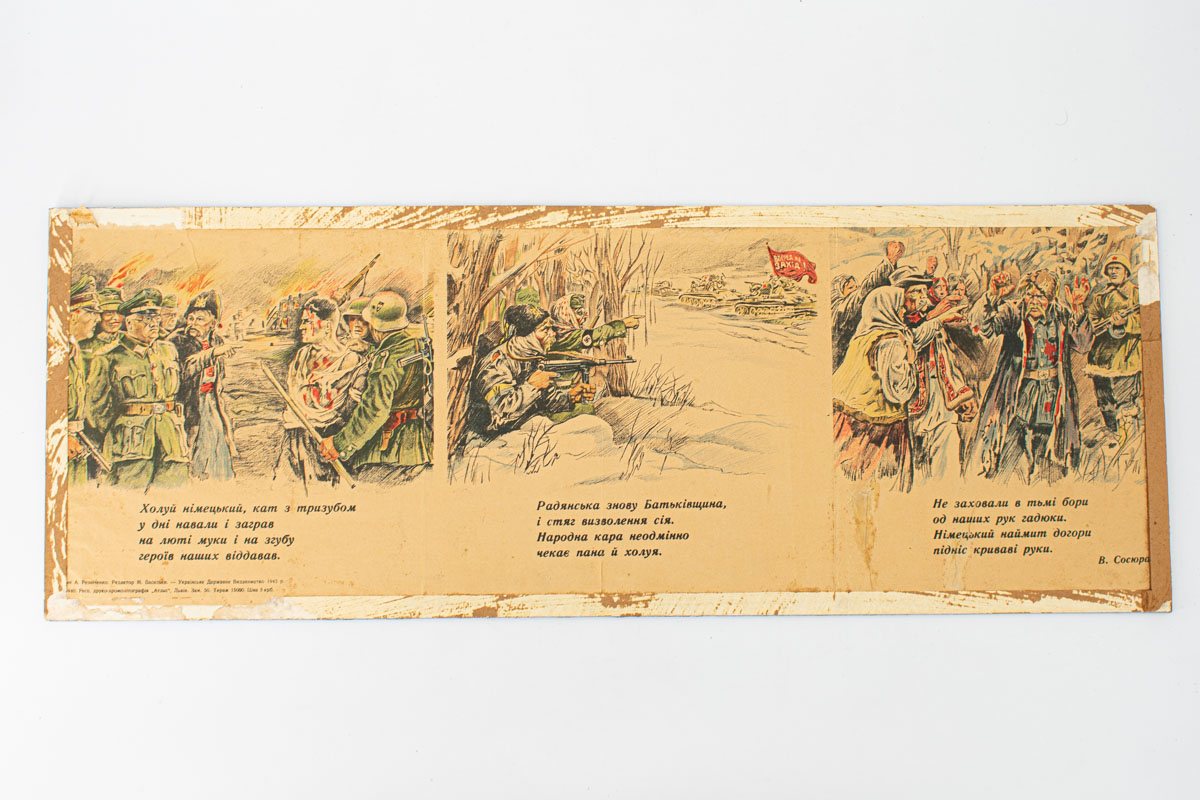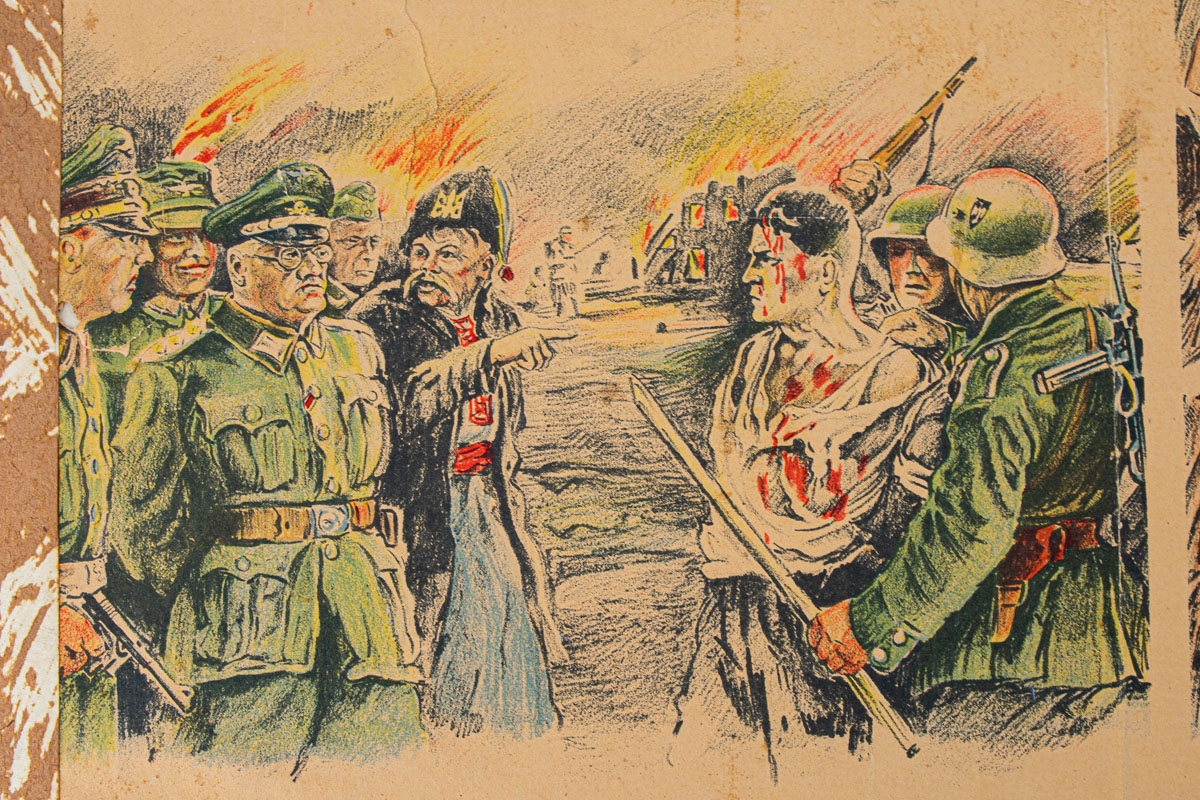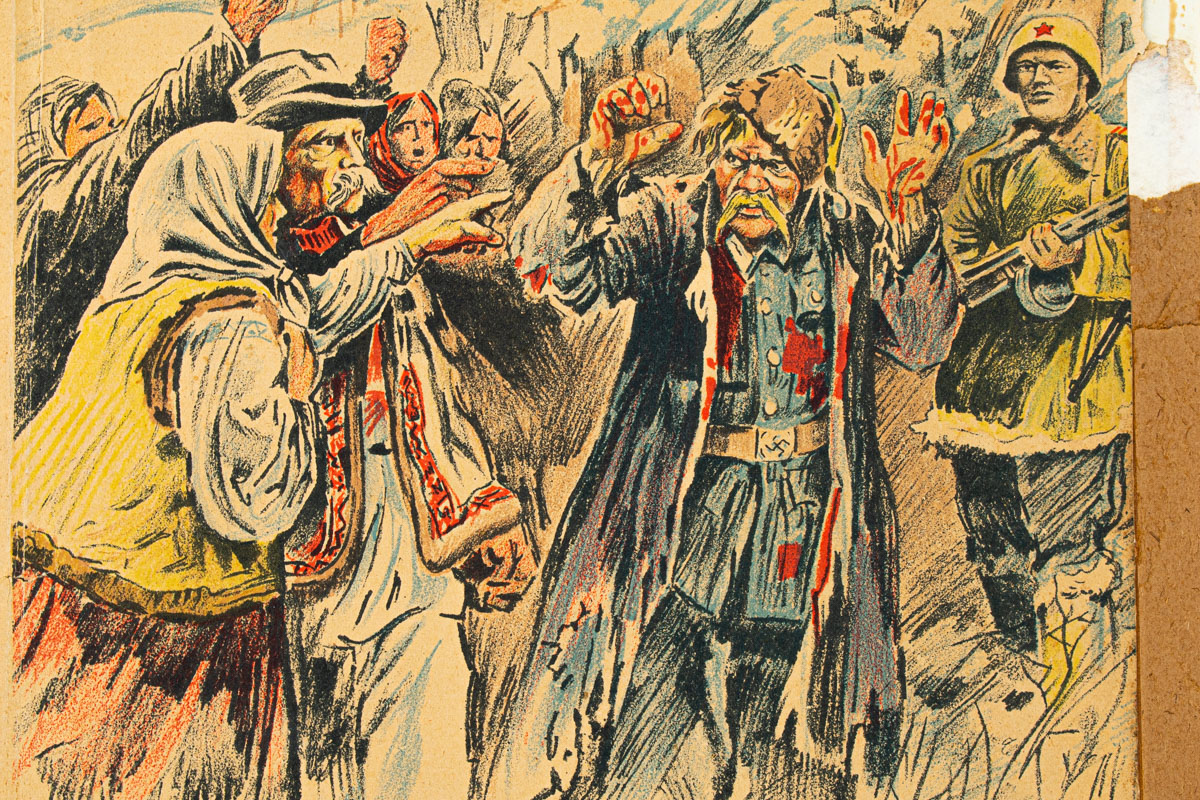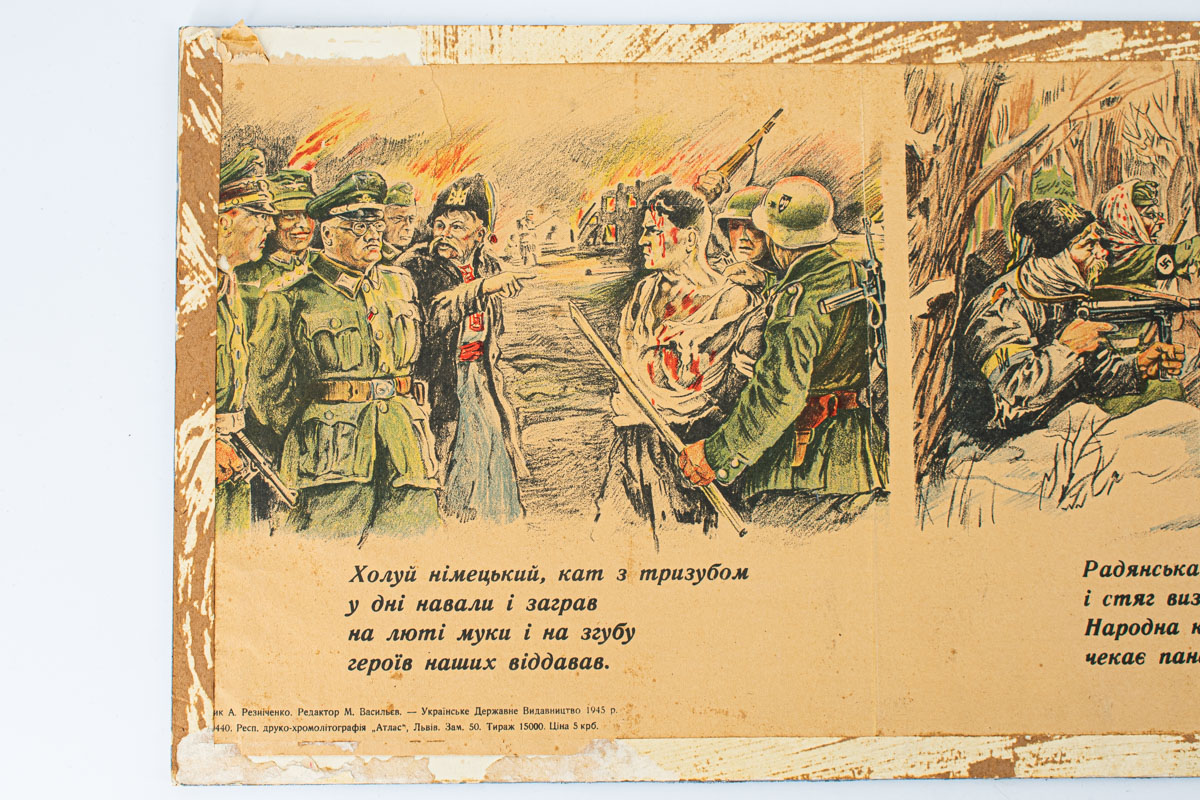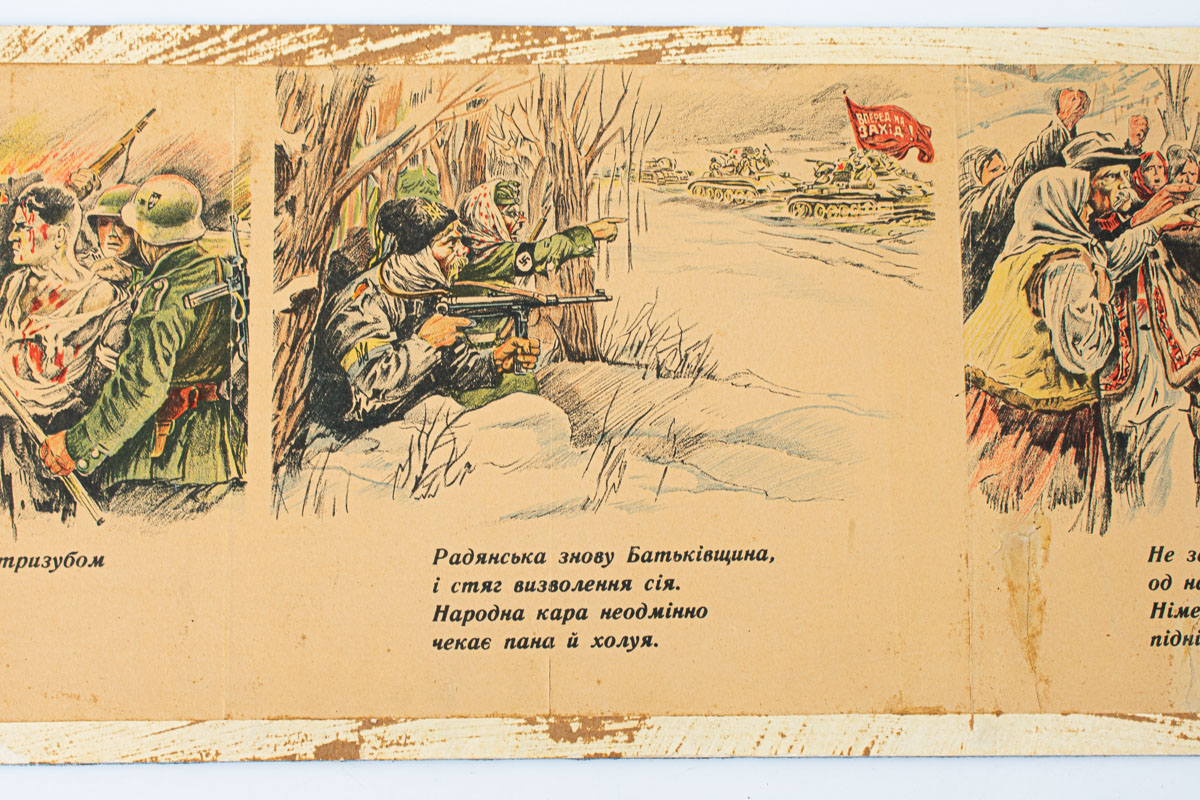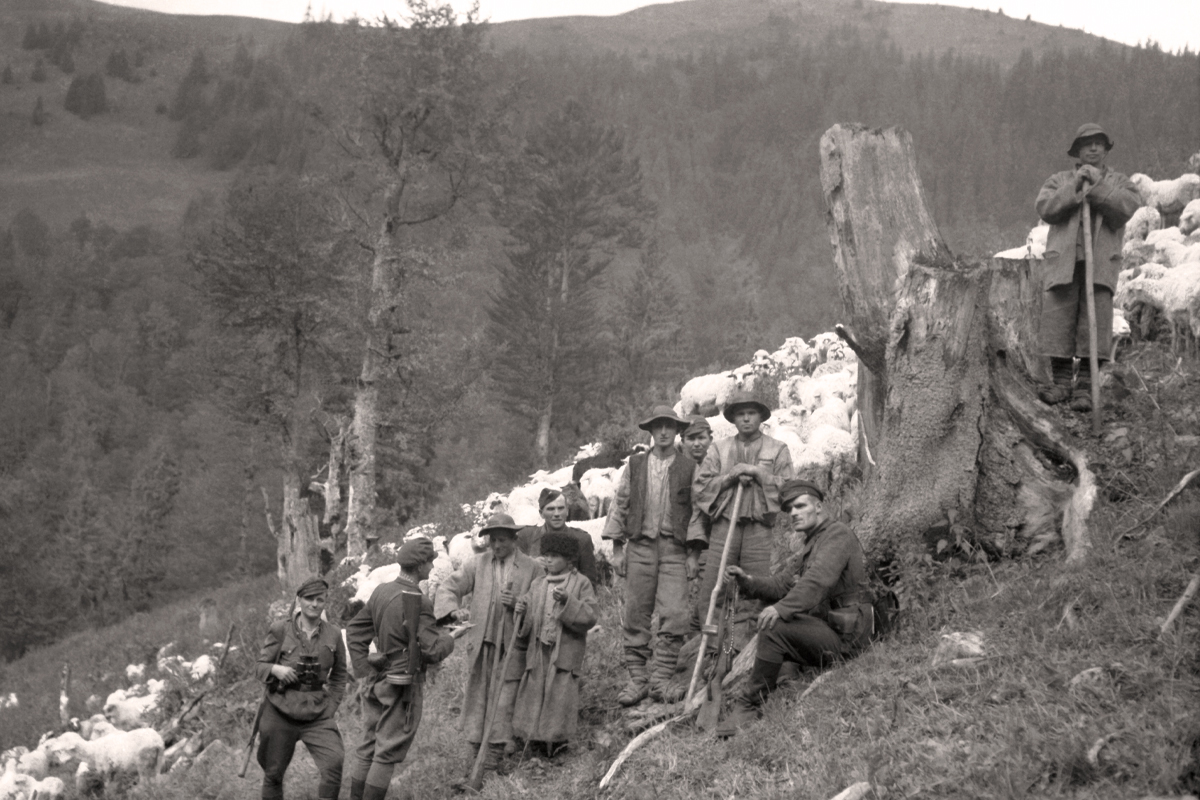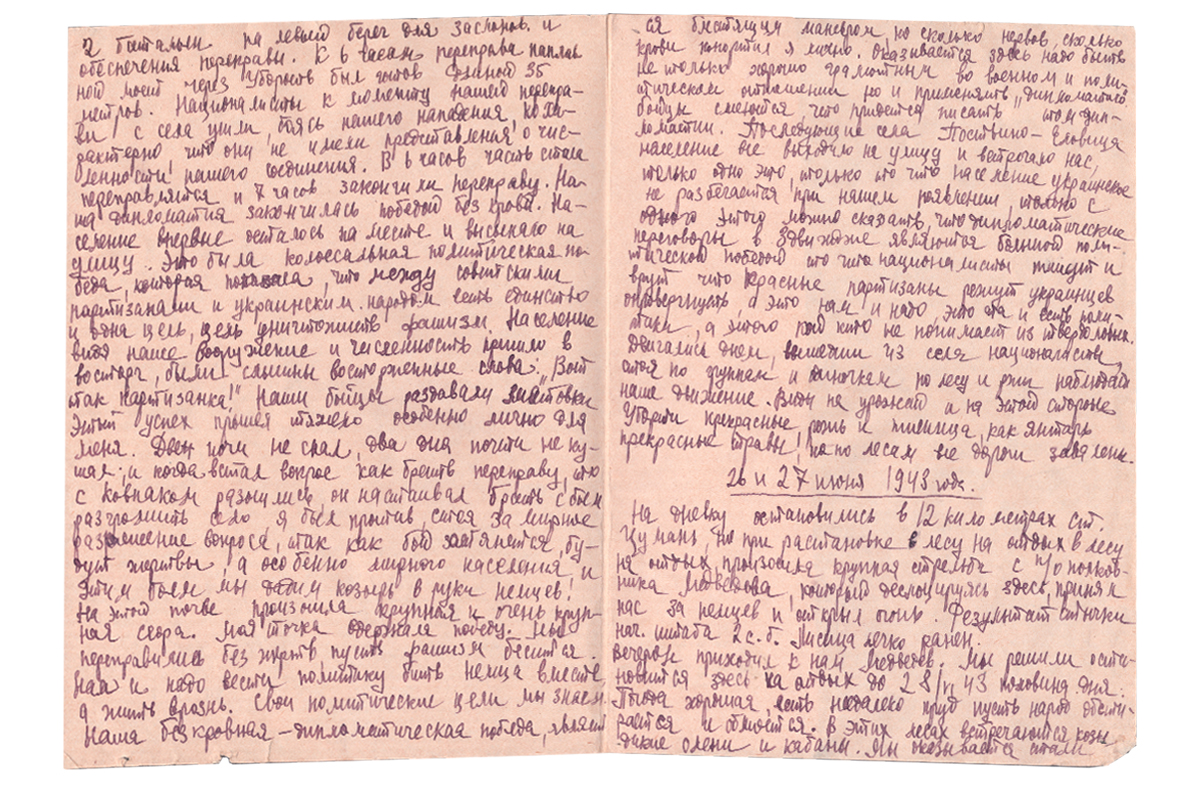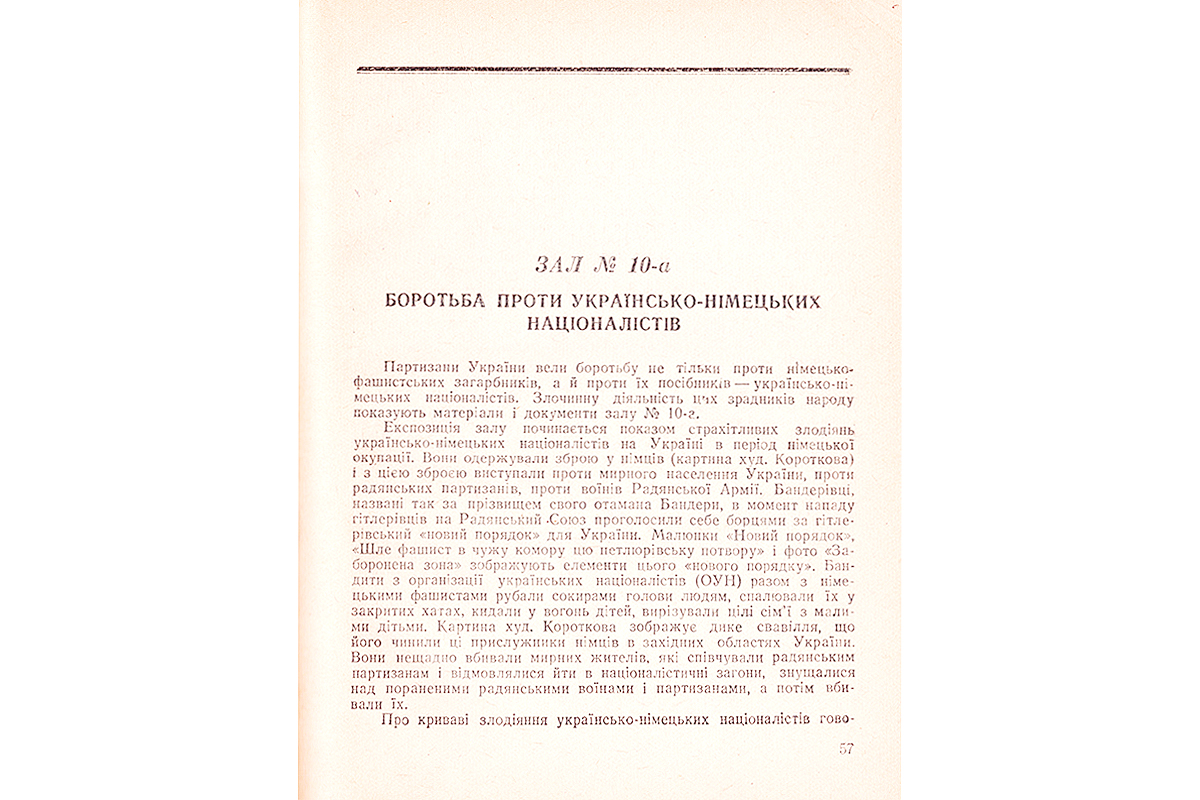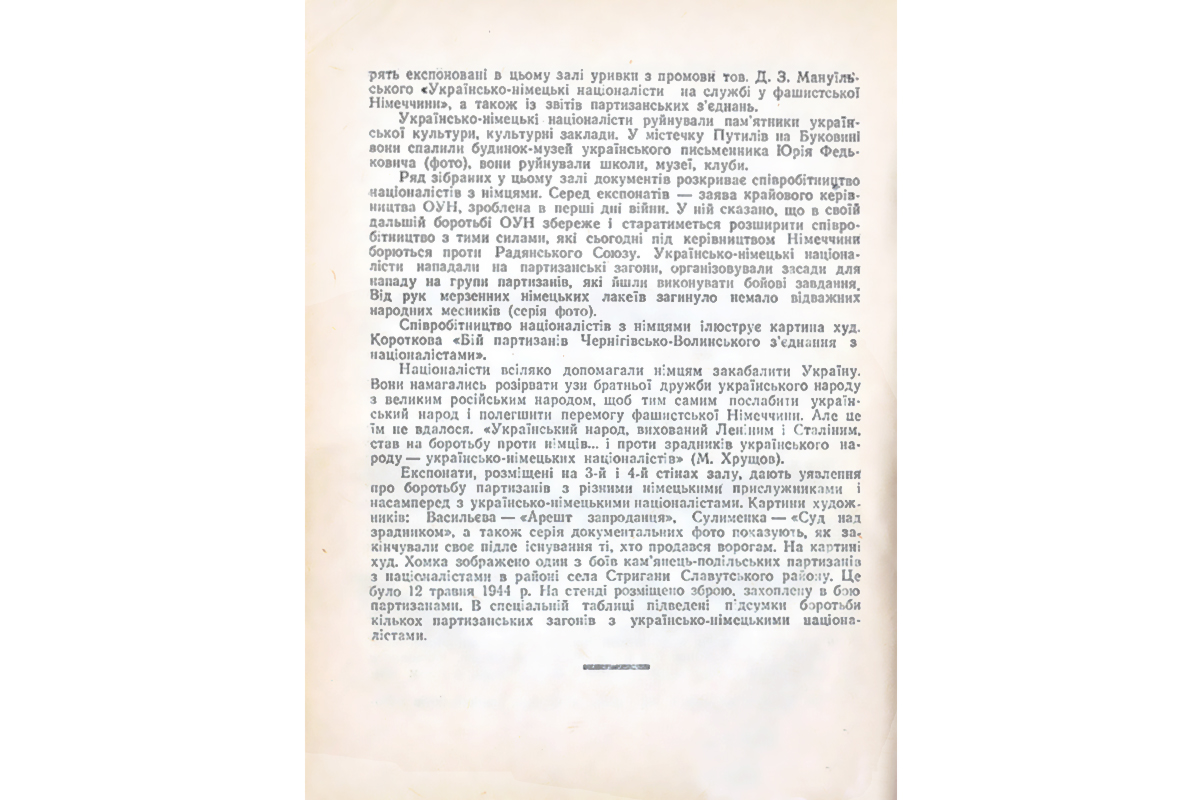The collection of the Museum houses a poster that stands as a vivid example of Kremlin-backed anti-Ukrainian propaganda coinciding with the Second World War.
Printed in Lviv in 1945, it was created with the involvement of Soviet artists of Ukrainian origin—its visual imagery by Abram Reznychenko, and its textual accompaniment was a verse titled “German Lackey, the Executioner with a Trident…” by Volodymyr Sosiura.
Clearly, the agitprop aimed to manipulatively equate German Nazism with the Ukrainian liberation movement while contrasting the Ukrainian SSR with the idea of independence.
The poster was displayed during the exhibition “Partisans of Ukraine in the Fight Against the German-Fascist Invaders”, in hall No. 10-a “The Struggle Against Ukrainian-German Nationalists,” which was added at a later stage of the exhibition’s development. The “atrocities of Banderites” were largely represented through Soviet paintings, excerpts from accusatory speeches by Communist officials, partisan “trophies,” photographs of the fallen (often tortured) insurgents, and isolated documents from the OUN that contained even the slightest suggestion of collaboration with the Germans.
The significance of this artifact lies not only in the fact that today we know much more about the UPA’s struggle against the Nazis—especially their first battle, when Hryhorii Perehyniak’s company “Korobka” attacked a German gendarmerie unit in the town of Volodymyrets (Rivne region) on February 7, 1943. In fact, “Korobka’s” unit had already conducted similar operations in January 1943. From the summer of that year, in Volyn and Podillia, and later in Galicia, armed units of the OUN(b), detachments of the Ukrainian National Self-Defense, and Taras Bulba-Borovets’ UPA “Polissian Sich” fiercely resisted German forces. At one point, the enemy was even forced to involve SS troops, including the 8th SS Cavalry Division “Florian Geyer” and various SS police regiments. According to researchers, the total number of German casualties ranged from 12,000 to 18,000.
Behind this poster stood a deliberate campaign by the Soviet top leadership to discredit the Ukrainian independence movement, which intensified as the Soviet-German front advanced into Western Ukrainian territories. Its objectives included influencing the local population—many of whom remembered the first Soviet occupation—facilitating conscription (as conscripts from “former Polish lands” had to undergo strict ideological training, unlike the “blackcoats” from Central Ukraine), and preventing ideological destabilization within the Red Army and its rear units.
Stalin once stated: “Print is the only weapon through which the Party speaks daily and hourly to the working class in its own necessary language; no other such powerful apparatus exists in nature.” In this vein, the chronological milestones of the anti-Ukrainian campaign included:
- The speech by Kostiantyn Lytvyn, Deputy Head of the Propaganda and Agitation Department of the Central Committee of the Communist Party (Bolsheviks) of Ukraine, at the 9th Plenum of the Union of Soviet Writers of the Ukrainian SSR on February 7, 1944, where he stated: “Ukrainian Soviet writers must show the greatness of the Ukrainian people in their struggle for their homeland, for the brotherhood and unity of the Soviet peoples under the genius leadership of the great Stalin, and expose and brand the vileness and baseness of our enemies—the Hitlerites and their accomplices, the bourgeois nationalists.”
- The Central Committee decree of the All-Union Communist Party (Bolsheviks) “On the Shortcomings in Political Work Among the Population of the Western Regions of the Ukrainian SSR” (September 27, 1944), which obliged party structures to increase the role of the press in the fight against Ukrainian bourgeois nationalism.
- Nikita Khrushchev’s speech “Ukrainian-German Nationalists—Hitler’s Accomplices, the Fiercest Enemies of the Ukrainian People” at the 6th Session of the Supreme Soviet of the Ukrainian SSR.
- The mass dissemination of leaflets titled “To the Population of Galicia” by the Propaganda Department of the Central Committee of the Communist Party (Bolsheviks) of Ukraine, warning: “Before their inevitable destruction, the enemy seeks to disrupt the united front of Slavic nations, pitting Western Ukrainians against Eastern Ukrainians, Ukrainians against Russians and Poles… The Hitlerites and their henchmen—the Ukrainian-German nationalists—promise to turn Galicia into a phantom ‘Independent Ukraine’...”
As per Soviet practice, on August 20, 1944, the Council of People’s Commissars of the USSR and the Central Committee of the All-Union Communist Party (Bolsheviks) adopted a decree “On Strengthening Soviet Power in Ukraine,” which called for the allocation of 5,000 km² of land in Yakutia for the construction of 300 corrective labor camps intended for the “hostile and unreliable elements from Ukraine” for their “re-education.”
In its ongoing aggression against Ukrainian statehood, today’s Russia continues to embrace the same misanthropic, chauvinistic worldview of its Soviet predecessors—employing identical methods of national subjugation. That is why this poster, which merged the work of Ukrainian-born artists and writers once intended to represent authority in the eyes of their compatriots, has not lost its historical relevance. On the contrary, it acquires new meaning in studying and curating the hybrid aspects of the Russian-Ukrainian war.
